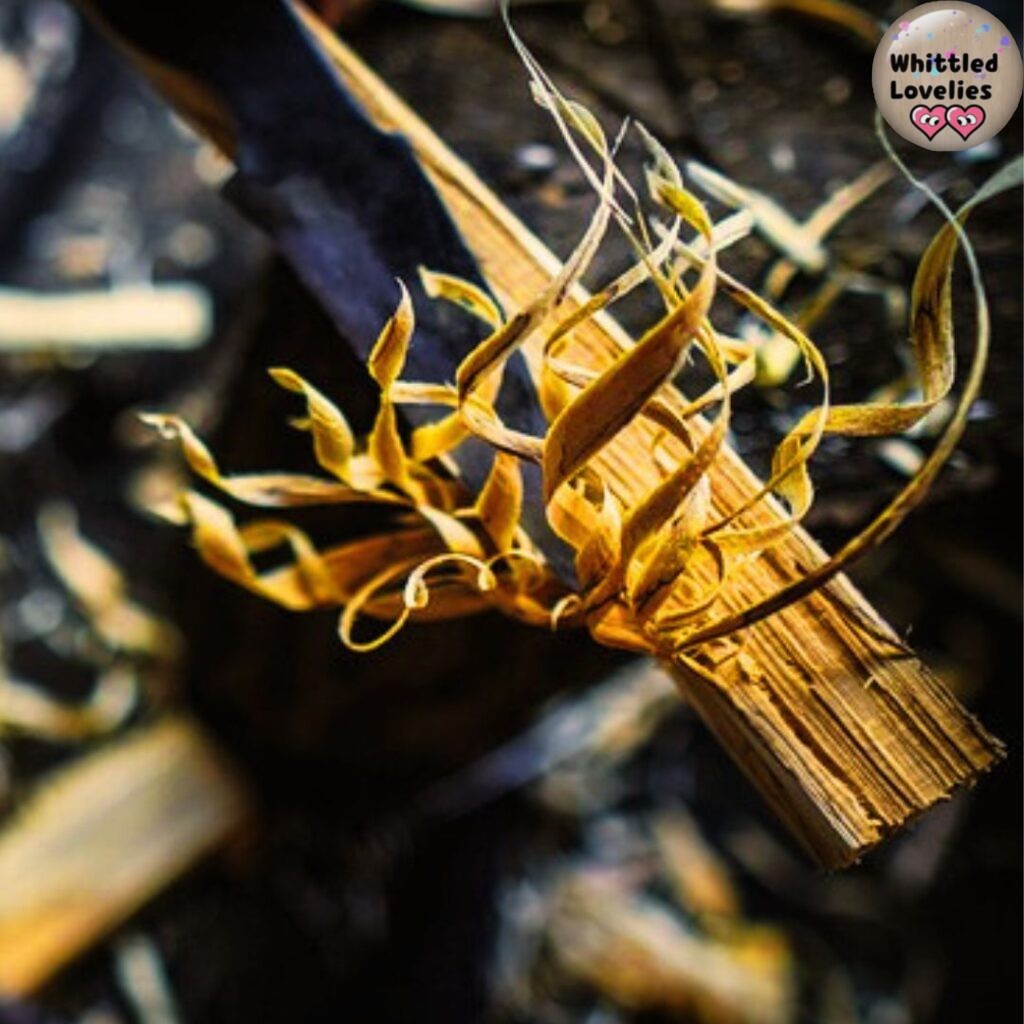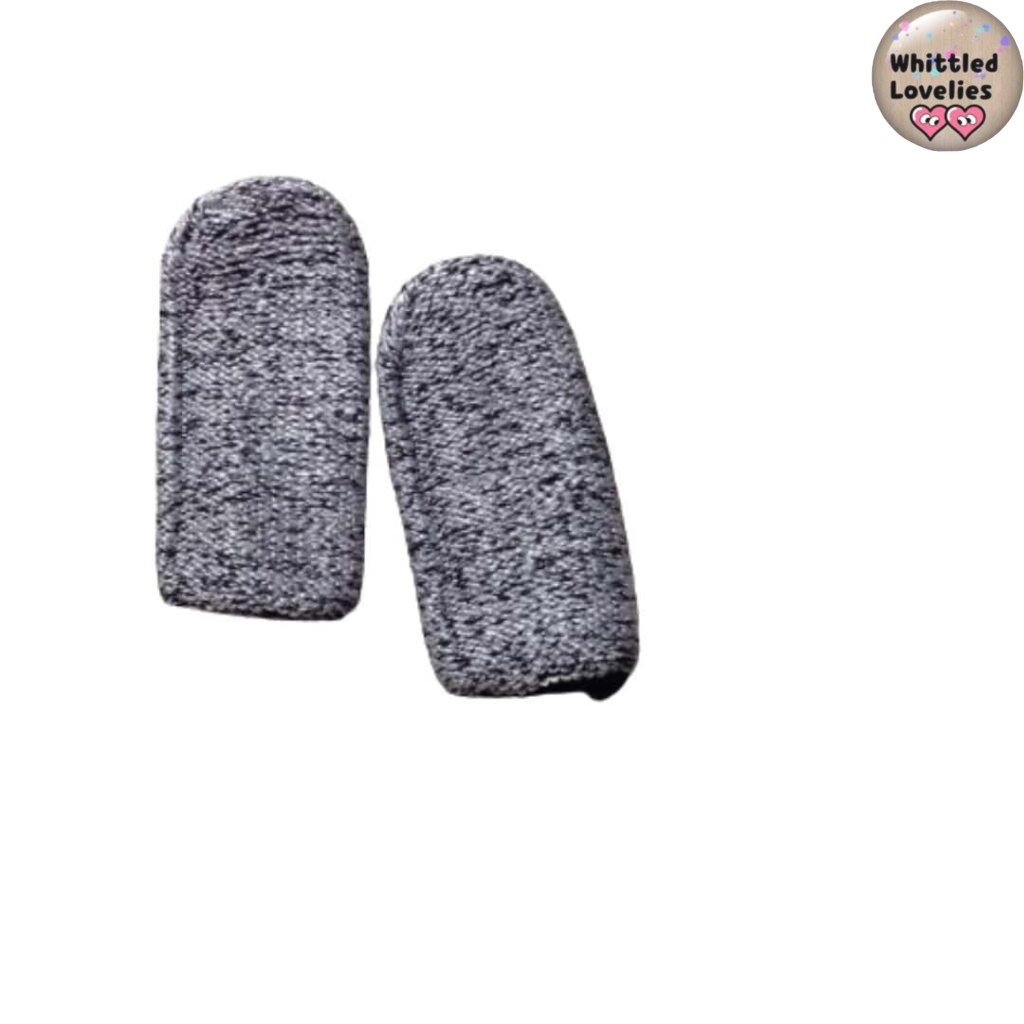
All possible knife cuts of woodcarving!
Good morning avid readers!!! Today I have prepared for you a definitive guide to put an end to all the doubts that have brushed by you trying to learn woodcarving! In this Tutorial I will teach you all the possible knife cuts of woodcarving! But really all possible types!
At last you can say no more about the confusion of names floating around in your head, here I have also gathered together for you the variations in execution and name. When you have finished practicing all these cuts you will be ready to become a real professional Whittler!
Let us now begin by clarifying a simple concept that perhaps some people, especially in Italy, since we often use English terms for convenience, have not yet grasped well. Namely:
what is whittling?
Well, whittling is nothing more than knife carving of wood. That is, the carving work that is done only with the help of one or more wood knives.
Often, again in Italy, we are almost forced to use these English terms because our translation equivalent is just “intaglio” (carve). And it’s really poor as a translation because with this word we don’t express the concept of just knife cutting, it’s a very general word for us.
Often coupled with whittling we also hear about woodcarving, but so what:
what is the difference between whittling and woodcarving?
Although they are often named together or misused as synonyms for the same term, this is not the case at all. Woodcarving is still a type of carving, but it involves the use of tools that are gouges, mallets, or other supporting equipment.
It is true that, many times, even though we do whittling projects, we do it not completely. In fact, we use power saws or gouges for convenience even if only by palm and here we merge the two arts together.
Starting a pure whittling project is not only possible, but it will be a pleasure to do so after learning from this tutorial, the art of all wood cuts made with a knife!
I am sure that during your training you have certainly come across many terms as far as basic cuts of woodcarving are concerned. This many times creates some confusion or depression because you think there are so many that you can’t remember them all, let alone redo them! 😖
And instead today you will find that in the end to be remembered are only 5 or 6. 😳🤨 Amazed? I assure you that it is not important that you know all the names by memory, or all the variations. As you learn, you will discover that all the cuts of woodcarving are intuitive; you just need to be shrewd and learn them to be able to do them safely.
That’s it. You need to assimilate the various names you might come across in order to follow tutorials. But eventually, as you stand there with your project in hand, you will make reasoned cuts even without remembering the name or saying to each other…. “now I’m going to make a Push Cut”…!
I named him, so let’s start with him, the infamous, multi-named 😱:
Push Cut
It is one of the most commonly used cuts in wood when roughing the piece, along with the Pull Cut, which is exactly its opposite. It is a reduction cut, a cleaning cut, not a cut used in detailing.
Cutting is super simple is also highly intuitive just push the blade outward, the opposite of coming toward the body.
There are several variations of this cut that mainly differ in controlled cuts or free cuts. I always recommend using a controlled cut, it is obviously safer for you or those close to you. Let’s look at the variations and the many names of the Push Cut:
Thumb Push Cut
Thumb Pushing Cut
It is a controlled Push Cut, in fact you apply force with a thumb of the hand holding the knife on the blade. It reduces fatigue and better directs the cut, which stops automatically as soon as it reaches the edge of the wood.
Thumb Push Stroke
Useful for making deeper but still controlled cuts. You use the thumb of the non-cutting hand over the blade to push into the wood in the direction you want the knife to cut. This additional force allows you to cut deeper but safely.
Rough Cut
Power Cut
Straight Cut
Straight-Away Cut
All variations of the name, but same application. It’s an uncontrolled Push Cut, it’s the classic coarse roughing cut. You sink the blade, more or less deep and push with wrist force away from the body.
Levering Cut
Lever Cut
Push-Away Cut
Push Stroke Cut
Again many names but the same type of cut. It is used in rather awkward positions, when other cuts are not possible or when it is impossible to help with the thumb. It is a free Push Cut but not too coarse. To avoid cutting more than necessary one normally relies on a final Stop Cut.
Slicing Cut
It is the classic cut used to clean a carrot, to give a very simple example. I have included it as a variation of the Push Cut but you can also use it as a variation of the Pull Cut as needed. The blade slides freely, quickly away from the body (Push) or toward the body (Pull). It is used to do small touch-ups to roughing very quickly.
Sweep Cut
Sweeping Cut
These cuts in the wood create a curve within the cut by the movement of the wrist. I mentioned this in the old article so here are the details. It combines the Thumb Push Cut technique with a wide wrist movement.
Stop Cut
This type of cut is useful in many situations. Mainly its use ensures us strong angles and precise separations. It is a cut composed of two steps, the first is precisely the clean cut, the Stop, and the second is to tilt the knife and slide to reach the cut.
To reach the cut we actually just apply either a Push Cut (going toward the Stop Cut) or a Pull Cut (from the Stop Cut toward us) depending on where we are carving.
Clearing Cut
It may happen that by making a Stop Cut we were inaccurate in estimating the depth of the cut. No problem, the Clearing Cut comes in handy for this very example. You make a series of light cuts in the wood, in the same direction pointing to the Stop, with the help of your thumb pressing down on the blade.
The same way can be done when we want to increase the depth of the cut, or when we just want to clean the cut. These small arranging movements leave the cut as clean as if it had been professionally made.
V-Cut
It is the classic cut used to make details. I mention it here, a little quickly because it is also part of the article on the 4 basic cuts where you can find detailed instructions on how to make it.
These cuts in wood are of the compound type: that is, they are made in three movements, or of three cuts as you like. First you make the straight cut of the Stop-Cut. Then you make a Push Cut and a Pull cut. The result will be a V in your wood.
It is also correct to perform it without doing the Stop Cut line. With a little practice you can make a Push and a Pull Cut that meet to form a V. In this case a perfect triangle will be made as a reject.
We are lucky! 😅 This cut seems to be known under only three different names! Here they are:
Vee Cut
V-Shaped Cut
V-Notching Cut
Pull Cut
As mentioned earlier, it is the opposite of the Push Cut. It is a cut more suited to shaping rather than roughing the figure, but it can also come in handy when we find that we are carving in the opposite direction to the wood fibers.
This is also an easy cut to master. Very effective in that it combines control and strength, but being that the blade is directed toward the body it needs some extra safety precautions.
In this particular type of cutting, the first thing to do is to protect the finger below the cutting line. In this way the protected finger pushes the wood toward the blade and thus the cutting wrist fatigue is halved.
If the finger cannot be protected with wood, it is necessary to use a thumb guard. That way when the knife gently stops its stroke on the finger it cannot injure us.

We can say for simplicity’s sake that it is the classic cut we make when we want to peel an apple, the blade slides toward the body and toward our thumb!
The Pull Cut also has many names, but unlike the Push Cut not many variations except those with the thumb used or not. The most common names that are used are:
Thumb Brace Cut
Pull Stroke Cut
Pull Draw Cut
Paring Cut
Pare Cut
Thumb Cut
Back Cut
Cut Back
Squeeze Cut
Pyramid Cut
These wood cuts are widely used to create details or particular shadows in a carving. For example, it is used to particularize eyes or create geometric carvings. It essentially consists of 3 cuts that recreate a triangle. When done correctly the resulting trick is a perfect pyramid.
The details of this cut can always be found in the old article of the 4 basic cuts. The Pyramid Cut is no exception and is also called by different names, let’s see which ones:
Stab Cut
Chip Cut
Triangle Cut
Line Cut
We conclude with a cut that is used a lot in details: defining clothes and separating them from the body, folds, eyes, eyebrows, etc.
The Line Cut is soon done, you make an incision line as long and as deep as you need. Then from the side where you need to dig (either right or left of the incision) you insert the tip of the knife until it touches the Stop line, at a slight angle, and dig more or less deeply parallel to the incision line.
It too yields to the enticements of having more names, but that are some small variations:
Curved Cut
It is performed in the same manner as the Line Cut, but with the starting line, and of course the side, wavy, or curved line.
Linear Cut
I insert here a variation to the Line Cut that does not actually have a name. As soon as the “long” cut is tackled, before digging to the side, two small stop cuts are made at the ends. This is to prevent going too far and to ensure, where possible, more precision to the cut.
Channel Cut
We carve a deep and long line as needed, curved if desired. Exactly the same as for the Line Cut. But instead of working to the right or left of the cut, we clean in both sides forming precisely a channel.
Running Cut
And here we are at the end of the ultimate guide! You have just become masters of knife cuts of woodcarving! 😄 Try them all!
I also prepared for you the tutorial with video support! Here it is or you can find it on the YOUTUBE: https://www.youtube.com/@whittledlovelies!
If you find that I have forgotten any cuts, or any names please do not hesitate to contact me!
Good practice! Learn, learn and learn! Try to see if you are also interested in other related articles in the basic topics category, see you in the next article! Bye!!! 😘😘😘
This is an article written by a human for humans!
All articles in the blog are written by me. No contributors, no people paid to write content for me.
Posts written by guests or friends of the blog are marked under the title with the words “guest post.” These are friendly collaborations, contributions to the carving community.
No AI (artificial intelligence) support is employed in the writing of blog articles, and all content is made with the intent to please humans, not search engines.
Do you like my content?
Maybe you can consider a donation in support of the blog!

Click on the button or on the link Ko-fi to access a secure payment method and confidently offer me coffee or whatever you want!
From time to time, in articles, you will find words underlined like this, or buttons with the symbol 🛒. These are links that help deepening, or affiliate links.
If you are interested in a product and buy it suggested by me, again at no extra cost to you, you can help me cover the costs of the blog. It would allow me to be able to give you this and much more in the future, always leaving the content totally free.
